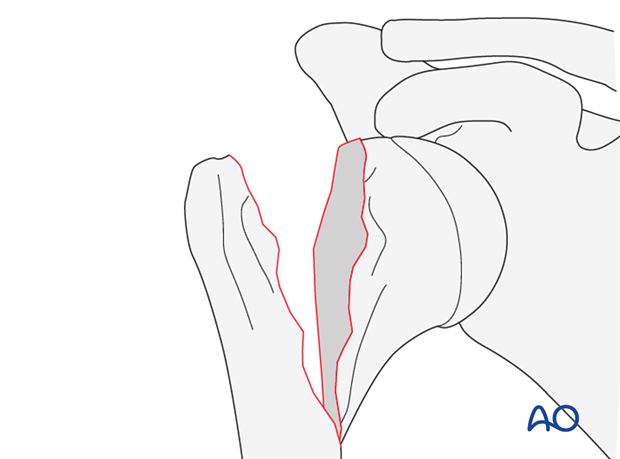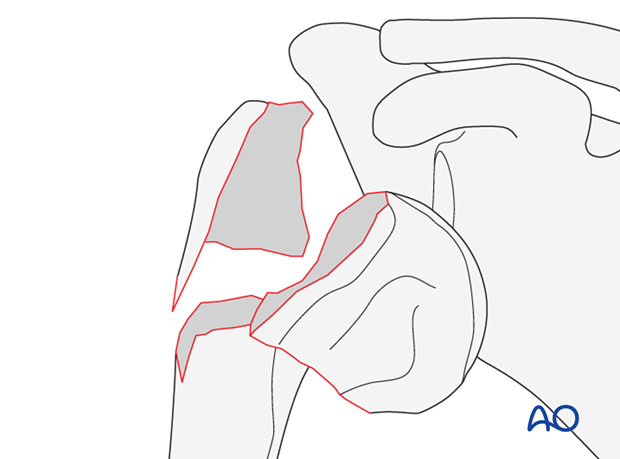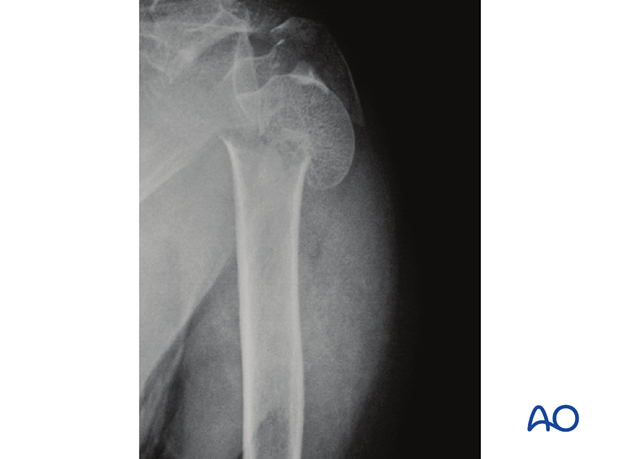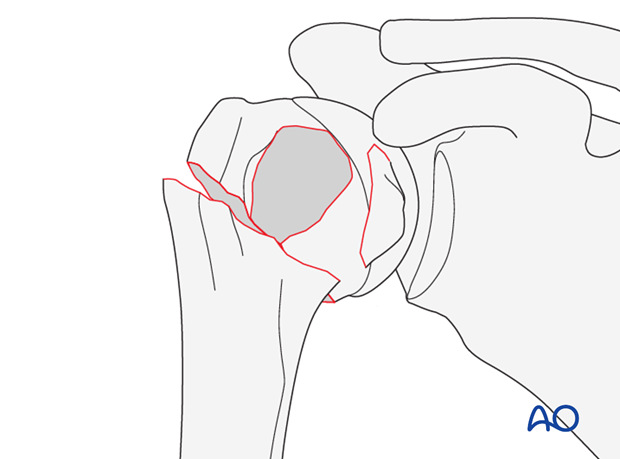Extraarticular 3-part, surgical neck and tuberosity, dislocation
General considerations
These fractures are bifocal fractures, involving the surgical neck and one tuberosity. Neither fracture line involves the articular surface.
The common feature of this group is the glenohumeral dislocation, in addition to a displaced metaphyseal fracture and a tuberosity avulsion. The dislocation should be reduced as soon as possible, and often requires open reduction. After reduction of the dislocation, the displacement of an involved greater tuberosity may result in impairment of shoulder function due to displacement of the rotator cuff insertion and consequent impingement.
The dislocation may be associated with a glenoid rim fracture.
Fracture with “vertical” cervical line, intact greater tuberosity and anteromedial dislocation
This subgroup consists of an anteroinferior glenohumeral dislocation combined with a single, vertical fracture line which crosses the greater tuberosity and continues through the metaphysis medially.
Neither the greater nor the lesser tuberosity are separated. The greater tuberosity is still adjacent to the humeral shaft and the lesser tuberosity is connected to the head fragment.
Even showing only one single fracture line, this fracture pattern is considered bifocal.

Fracture with “vertical” cervical line with fractured greater tuberosity and anteromedial dislocation
This subgroup consists of an anteroinferior glenohumeral dislocation combined with a vertical fracture line running into the medial metaphysis. Additionally, the greater tuberosity is separated due to the pull of the posterosuperior rotator cuff. This is a so-called 3-part fracture dislocation.


Fracture with involvement of lesser tuberosity and posterior dislocation
These fractures consist of a posterior glenohumeral dislocation - also a so-called 3-part fracture dislocation. In this case the lesser tuberosity is involved and displaced.














